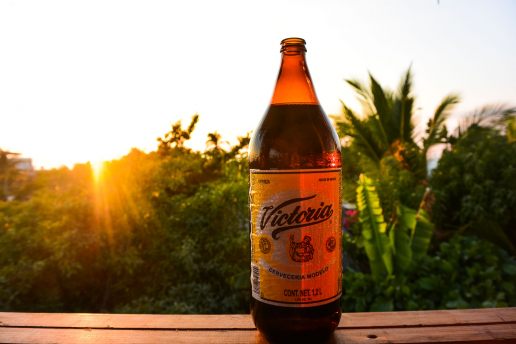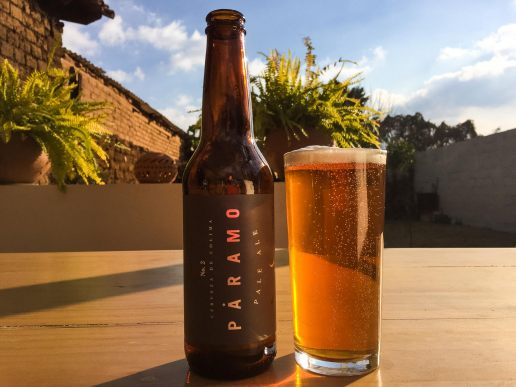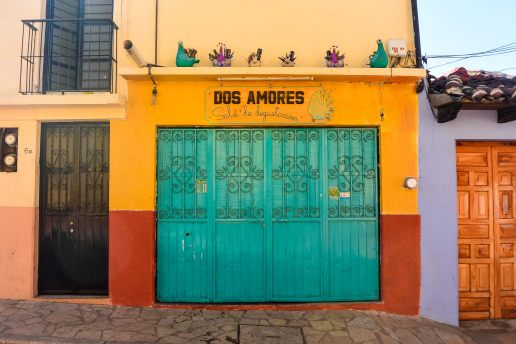[easy-social-share buttons=”facebook,twitter,pinterest,pocket,mail” counters=1 counter_pos=”hidden” total_counter_pos=”leftbig” style=”icon” twitter_user=”@Prostly” point_type=”simple”]
Mexico has never been particularly renowned for its beer. Sure, many of us can’t deny Corona as one of our first segues into beer, likely attracted by the perceived sophistication of the lime into bottle technique, which often resulted in disaster for first timers. Or every time for those like me. Alongside Corona, over the past two decades Mexican brands proliferated our bars and liquor stores, making the country one of the largest producers of beer in the world. And despite making a lot of it, Mexico doesn’t garner the same notoriety as other beer producing nations, take Belgium and Germany for example.
To be fair, Mexico receives considerable international recognition for its other libations than it does for its beer. The resurgence of the cocktail trend across the globe has seen a rise in craft, luxury and obscure tequilas, while mezcal has risen to prominence as the hippest drink base in recent years, with mezcalarias opening up in trend forward cities. Even pulque, the ultra traditional Mexican beverage made from fermented agave sap, is in the midst of its own comeback.
A month in Mexico earlier this year saw me exploring the country’s beer scene, from the classic brands that we all associate with Mexico to the emerging microbreweries that are introducing new styles to the local market. Not being one to discriminate, my beer experiences balanced both ends of the spectrum.

The Classic Mexican Beers
The two main players in Mexico’s beer market are Grupo Modelo and Cervecería Cuauhtémoc Moctezuma. Decades of local consolidation brought nearly every beer produced in Mexico under these two banners: Corona, Victoria and Modelo fall under the former while Tecate, Sol, Dos Equis and Indio make up the latter. Both groups were inevitably scooped up by global heavyweights AB InBev and Heineken, like practically every other regional beer player on the planet. With few exceptions, beer production by these major brands in Mexico is almost exclusively Pilsners.
The Mexican beers that most of the world are familiar with can more or less be described with the same bundle of adjectives: light, crisp and uncomplicated, perhaps with a zing of citrus if you squeeze a wedge of lime into it. And there’s nothing wrong with that. I’m a firm believer that there’s a time and a place for every beer and the ‘classic’ Mexican beer style is perfectly ‘crushable’ for sunny days by the water. As my good friend Aynsley says, “who the fuck wants to drink a bourbon barrel-aged Imperial Stout on the beach?”

Not me. While enjoying some downtime in Puerto Escondido, a beach town on the Oaxacan Coast that the New York Times deemed one of the top places to visit in 2017, I spent most of my time on the beach. This is a town of half a dozen gorgeous beaches where the pace of life is slow and the reigning motto is ‘no pasa nada‘. Here, a restaurant or beach shack is never far off serving up your typical Mexican beers like Corona, or my go-to Victoria. A darker lager with a low ABV of 4%, Cerveza Victoria is perfect for enjoying multiples in the sun.
It was in Puerto Escondido that I was introduced to the caguama. Also the name for a sea turtle, caguama is Mexican slang for a 32oz bottle that is stocked in most grocery stores and corner shops. Unlike a ’40’ of malt liquor that you can find across the United States, caguama’s are a symbol of working life and community in Mexico and are a format produced by most of the country’s major beer brands. At the end of each day, groups of workers ‘sign off’ with a caguama, splitting it amongst each other. As well as it being a social activity, many believe it’s stronger than the beer in standard bottles: as my host Pepe from Casa Kei put it, ‘the first third of the beer batch is used for kegs, the middle third for bottles and the bottom third for caguamas”, making the beer in that format stronger than the others.

Mexico’s Craft Beer Evolution
Despite a slower start, Mexico is certainly not excluded from the global craft beer trend, evidenced by many microbreweries and beer bars popping up around the country. Today, the greatest concentration of breweries is in Baja California, the strip across the border from beer mecca San Diego, although craft brewing operations exist in practically every region of Mexico producing ‘cerveza artesanal‘ in a variety of styles – not just pilsners.
I get my first glimpse at the range of the Mexican craft beers at a small bottle shop in the high elevation town of San Cristóbal de las Casas in Chiapas. After 24 hours of a food poisoning-altitude sickness hybrid, I come across La Internacional Cerveceria San Cristóbal in the same complex as the popular cafe Frontera. A small shop that’s filled with bottles from across Mexico, including a few locals from San Cristobal, I select everything that looks interesting, taking advice from the owner and fitting everything I can into my backpack.

A few weeks later in Oaxaca, I seek out hip restaurant El Destilado that has been recommended to me for its thorough craft beer list and modern take on classic Oaxacan food. Here the beer list is categorized by region so I can try beers from Baja California to Yucatan. No matter where they’re located, it’s clear that they are all eager in stepping up the status quo with bold IPAs like Insurgente’s La Lupulosa from Tijuana.
And while many of the craft breweries are small scale, more nano-brewery than microbrewery, the Mexican craft beer scene is experiencing year over year growth of 50%. While visiting local beer bar Dos Amores in San Cristóbal de las Casas, the bartender shows me a glossy printed catalogue of all of the craft beer brands in Mexico while I sip on a local Tokos’h IPA. Though printed just two months previously, he informs me that it’s already out of date and the publication can’t keep up with the rapid changes in Mexico’s beer scene.

This growth is especially impressive when you consider the challenges inherent in starting up a brewery in Mexico. From aggressive marketing tactics by Heineken and AB InBev to protect their market share to downright oppressive tax laws that favour the multinational breweries to difficulties in securing ingredients, beer production costs nearly three times more for an independent brewery in Mexico.
The result is a higher price point for craft brews, making them less competitive relative to the standard brands, particularly as emerging brewers attempt to win over local residents. While chatting with the head brewer of Oaxaca’s La Santisima Flor de Lúpolo brewery, I pose my theory that most of their clientele must be tourists or expats, open to the unique styles they have on offer and the higher prices that accompany them. Not so, he tells me. While the first months after opening locals were hesitant, they’ve embraced the brewery and its beers, like the Black IPA and fruity Guaya Wit, with open arms. “Tourists come and go”, he tells me, “but locals are here to stay.”
I can say with near certainty that the craft beer scene in Mexico won’t be slowing down anytime soon, but the major beer brands won’t be losing too much sleep over it. There’s a place for both here, at least for the time being.
Mexican Beer photos by Lauren Barth, Beer Illustration by Ana Estrada
Lauren
Lauren Barth co-founded Departful in 2012 is the Managing Director of Departful Media. Since then she has worked between North America and Europe and has published content in partnership with a variety of tourism boards and businesses based around the world. Lauren is currently based in Toronto, Canada.
Sign-up for our Monthly Newsletter
4 Comments
Add comment Cancel reply
This site uses Akismet to reduce spam. Learn how your comment data is processed.


[…] Mexican Beer: A Look at Mexico’s Beer Scene from Traditional to Craft […]
[…] Another cool article on Mexican beers. […]
[…] pilsners, Vienna-style dark beers, and Munich dark beers. These are two of the oldest beers on the Mexican beer scene and have survived time and time again. There are, however, a few microbreweries that produce a […]
[…] Mexican Beer: A Look at Mexico’s Beer Scene from Traditional to Craft – Prostly: This article provides an overview of Mexico’s beer scene, from traditional brands to emerging microbreweries. Link […]